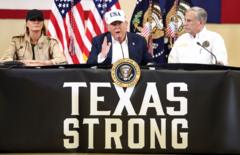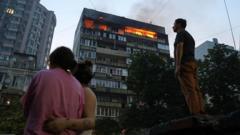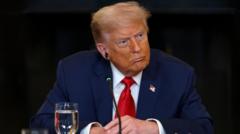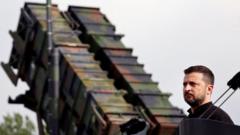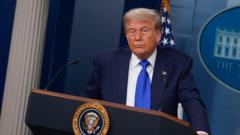Recent reports from an unnamed Israeli official suggest that although U.S. military strikes in June heavily damaged Iranian nuclear facilities, Iran may still be able to recover some enriched uranium from the Isfahan site, leading to conflicting assessments regarding the effectiveness of the strikes.
Israeli Official Claims Potential Recovery of Enriched Uranium at Struck Facility
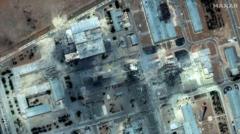
Israeli Official Claims Potential Recovery of Enriched Uranium at Struck Facility
Despite U.S. assertions of destruction, an Israeli source indicates Iran may reclaim uranium from Isfahan.
An unnamed senior Israeli official has conveyed to U.S. reporters that Iran might be able to retrieve enriched uranium from Isfahan, one of the three Iranian nuclear sites attacked by U.S. forces on June 22. Israel believes that accessing the buried uranium would be challenging for Iran, and any attempts could trigger renewed strikes from Israel. Former U.S. President Donald Trump has repeatedly claimed that the air and missile strikes completely "obliterated" Iran's nuclear capabilities, though certain U.S. intelligence evaluations remain more cautious.
Iran continues to assert that its nuclear ambitions are peaceful, denying any intent to develop weapons. The Israeli official, speaking at a briefing in Washington, noted that intelligence suggests a majority of Iran's enriched uranium is located at the Isfahan facility, which sustained strikes during what was termed "Operation Midnight Hammer." The official dismissed concerns that Iran's attempts to recover the material would escape detection, and optimistically projected that Iran's nuclear program could be delayed by as much as two years.
Despite Trump's claims of total destruction, a leaked preliminary report from the Defense Intelligence Agency indicates that the three facilities—Fordo, Natanz, and Isfahan—sustained significant damage but were not entirely wiped out. Moreover, CIA Director John Ratcliffe informed lawmakers that the attack curbed Iran’s capacity to produce metallic uranium, an essential component for nuclear weapons.
Rafael Grossi, head of the International Atomic Energy Agency (IAEA), also suggested that while the strikes caused substantial damage, not all infrastructure was eliminated. Iranian President Mahmoud Pezeshkian acknowledged the severe damage to the facilities, stating that access to them is currently impossible. As reports emerge highlighting the uncertain landscape in regional security, concern grows that an unpredictable threat from Iran remains.

